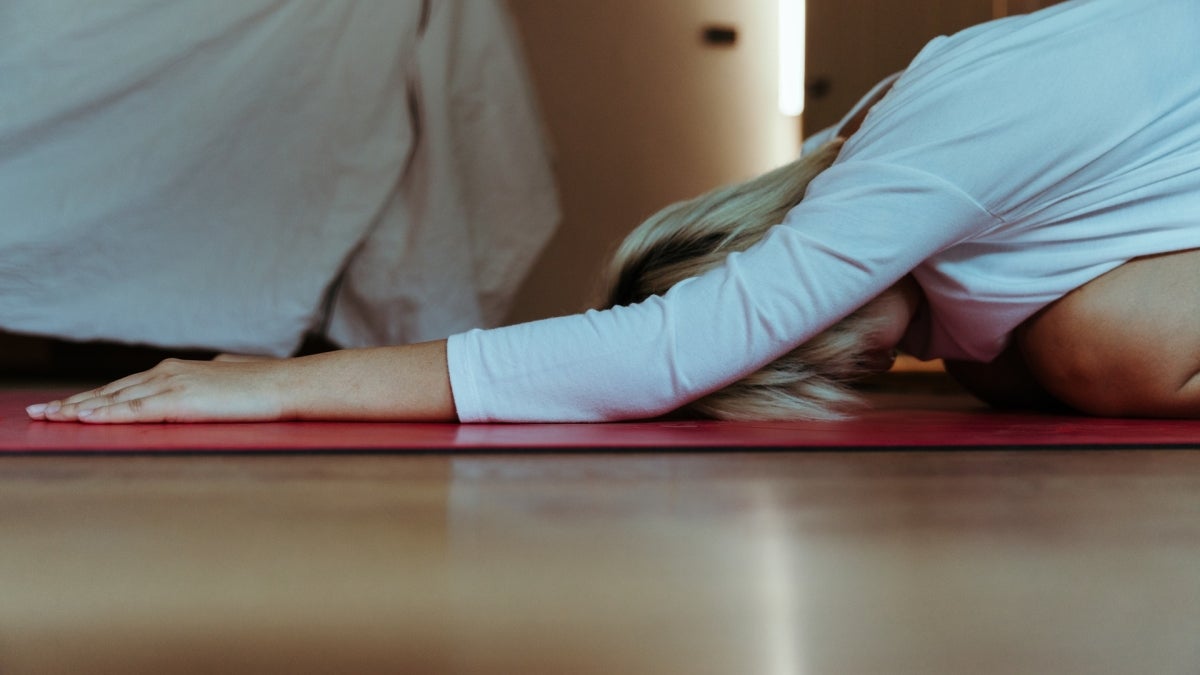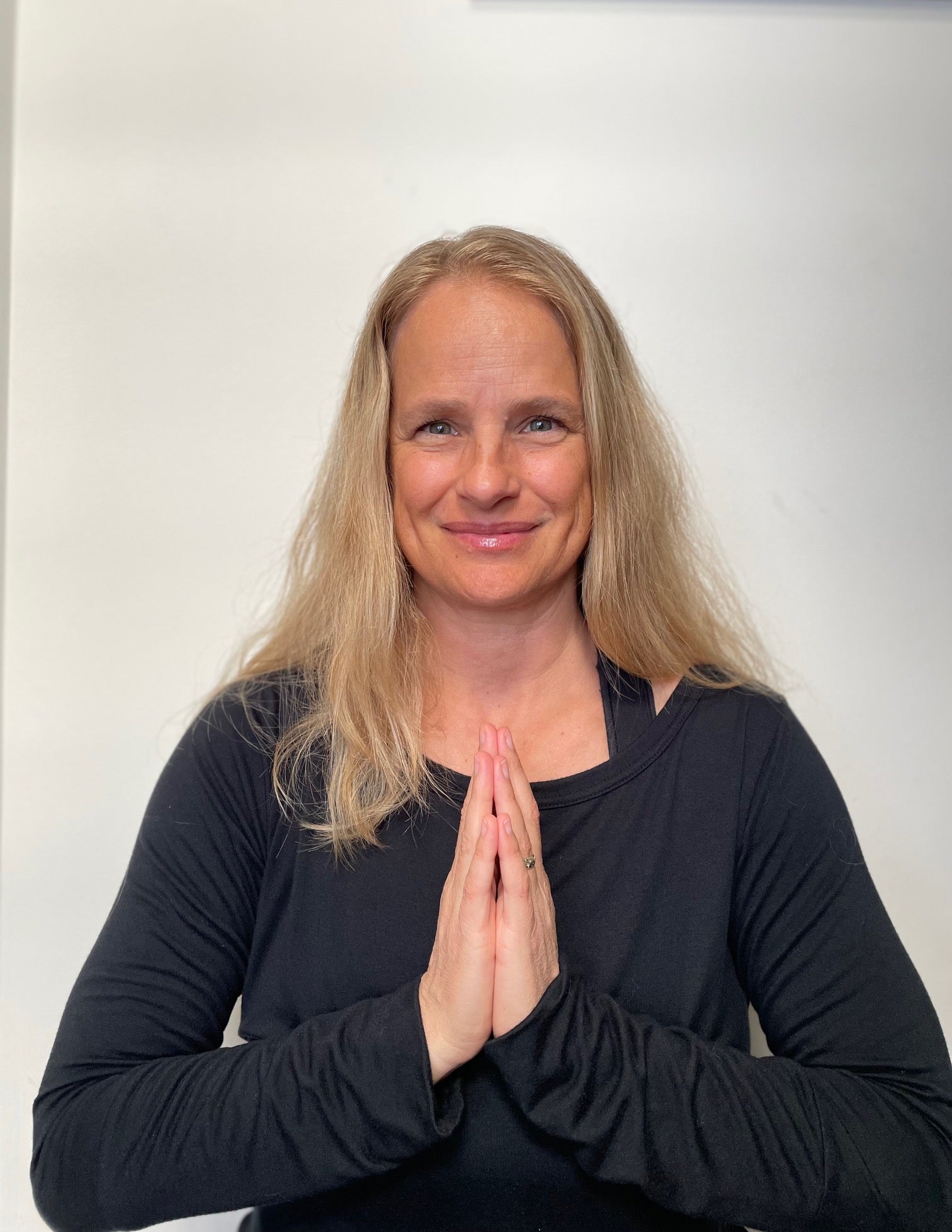When Rebecca Heller was admitted to the Doctor of Education in Leadership and Innovation program in Arizona State University's Mary Lou Fulton Teachers College in 2021, she knew that mindfulness would be a cornerstone of her practice-based research.
As both a yogi and an avid surfer, Heller first developed her own mindfulness practice when she moved back to her native California from New York in the early 2000s. Something just clicked into place for her, and the mind-body connection she found when practicing was cathartic.
Rebecca Heller
“The breathwork and movement (of yoga) allowed me to be in the moment, calmed my nervous system and cleared my mind,” Heller said.
Over the years, Heller incorporated simple breathwork and mindfulness practices into her work with students as a college counselor at Viewpoint School, a transitional K–12 independent school for high-achieving students in Calabasas, California, and when the opportunity to teach a yoga class at the school arose, she jumped at the opportunity.
At Viewpoint, students have an annual physical education requirement, and yoga is offered as one of the options students can choose from alongside traditional sports and physical education classes. Students have responded positively to the mindfulness lessons incorporated into the yoga, she says, and notes these calming practices are what they appreciate the most about the class.
Heller’s journey to ASU — and the Center for Mindfulness, Compassion and Resilience — began several years ago, when she noticed her students becoming increasingly stressed and anxiety-prone.
“I noticed a rise in anxiety and depression among students even before COVID-19 came along, and the pandemic only exacerbated issues,” she said. “These problems are not unique to Viewpoint; there is a national crisis around youth mental health.”
When she suggested creating a new position to oversee the development of a schoolwide holistic wellness program, school administrators agreed, and assigned Heller the new role of director of student wellness.
Viewpoint has always had strong social-emotional learning programming, but they have four disparate divisions who were each doing their own thing. The vision of the new position is to unite the wellness programming and create scope and sequence from transitional kindergarten to 12th grade. The goal is to deliver a strong wellness curriculum that addresses students’ physical and mental health in the hopes of raising the levels of well-being for all students.
Now, as a second-year student in the Teachers College's online doctoral program, Heller is researching and developing a mindfulness-based intervention for use within her school to test the efficacy of mindfulness on anxiety, depression and the general well-being of her students.
“There is much evidence-based research that supports mindfulness for mitigating anxiety and depression and raising overall levels of well-being,” she said. "Research also supports the positive effects of mindfulness on adolescent psychological health and academic success.”
This summer, Heller completed a 30-hour practicum with ASU's Center for Mindfulness, Compassion and Resilience, where she has fine-tuned her intervention and implementation strategy with center staff. Aware that one of the keys to creating and sustaining a holistic, mindfulness-based wellness strategy is an in-depth understanding of the inciting factors of — and solutions to — teenage anxiety and stress, Heller’s practicum has included self-directed research into mindfulness strategies for classroom success and improved student well-being.
As part of her practicum, Heller has also been engaged in the initial phases of action research alongside center staff on loneliness, social isolation and health challenges to Arizona communities, part of a multi-year consulting and development partnership between the center and the Maricopa County Department of Health Services.
“We’re examining loneliness and isolation as a stressor with very real impacts on individual and community health,” said Nika Gueci, the center's executive director.
“Rebecca’s research is helping us better understand dimensions of loneliness not just as a stressor in relation to academic performance for the high school student population, but in regards to span-of-life health outcomes for other demographics, too."
“Our mission is to support mindfulness and mindfulness-based thought leadership throughout our communities,” said Zachary Reeves-Blurton, who oversees student internships and practicum experiences within the center.
“As a leader in her school, Rebecca is in the perfect position to effect really meaningful change for her students, and we look forward to watching and supporting her as she embarks on this journey.”
Five mindfulness practices for students
In both her yoga room and office, Heller makes these simple practices the cornerstones of her mindfulness practice for emotional regulation, focus and stress reduction with her students, and you can practice them too:
• Belly breathing: Belly, or diaphragmatic, breathing encourages the student to breathe deeply into the diaphragm and notice the abdomen rising with the inhale and falling with the exhale. This type of breathing activates the vagus nerve and calms the nervous system. By focusing their attention on the breath for a period of time, students can learn to harness and better control their thoughts.
• Noting: Noting is a practice that starts with bringing the attention to the breath, and then counting the breaths from one to 10. One is the inhale, two is the exhale, and so on. When thoughts or feelings arise, the student is reminded to gently label them as “thought” or “feeling” and then let the thought or feeling go, returning the attention to the breath and the count. This allows the student to detach from their thoughts and see them for what they are, just thoughts and feelings that come and go.
• Boxed breath: Boxed breathing has the students focus on their breath through a square breathing pattern in which each cycle of the breath — breathing in, the space between inhale and exhale, releasing the breath, and the pause before the next breath — is stretched over a count of four. The student can simply continue the pattern for a few minutes, keeping the mind focused on the breath and the count to relax the body and calm the mind.
• Body scans: Body scans allow students to notice sensations or feelings in the body from toes to head or vice versa, area by area. Body scans can ask the student to notice the body parts, to tense and then release them, or to visualize them relaxing. Regular practice allows students to tune into their physical bodies, noticing or consciously releasing tension or physical signs of stress.
• Metta/loving-kindness meditation: When a student is having trouble getting along with others or feeling overly critical of themself, a loving-kindness meditation invites the student to practice experiencing warmth or kindness. Imagining someone they care deeply about, the meditation starts with wishing them well through a series of warm thoughts. For example, repeating the phrase “may you be peaceful, may you be safe, may you live with ease.” Once students are able to feel goodwill and warmth toward that person, they may imagine transferring that feeling to someone with whom they’ve had conflict — even if that is themself.
Top photo courtesy Ketut Subiyanto via Pexels
Story submitted by the Center for Mindfulness, Compassion and Resilience
More Arts, humanities and education

Professor's acoustic research repurposed into relaxing listening sessions for all
Garth Paine, an expert in acoustic ecology, has spent years traveling the world to collect specialized audio recordings.He’s been to Costa Rica and to Ecuador as part of his research into innovative…

Filmmaker Spike Lee’s storytelling skills captivate audience at ASU event
Legendary filmmaker Spike Lee was this year’s distinguished speaker for the Delivering Democracy 2025 dialogue — a free event organized by Arizona State University’s Center for the Study of…

Grammy-winning producer Timbaland to headline ASU music industry conference
The Arizona State University Popular Music program’s Music Industry Career Conference is set to provide students with exposure to exciting career opportunities, music professionals and industry…



